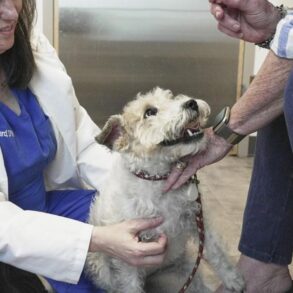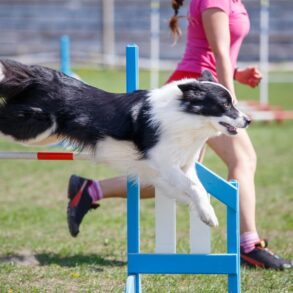Dogs are proving to be more than just our best friends, with a new study finding that we have important proteins in common that could accelerate our understanding and treatment of a complication of anterior cruciate ligament (ACL) injury, a condition that affects both species.
We recently reported on how a US biopharmaceutical company has embraced comparative oncology, the study of cancer in companion animals to gain insights into human cancer, and will soon go to market with a treatment for bone cancer in dogs and children.
In a new study, Cornell University researchers found similarities between canine and human anterior cruciate ligament (ACL) injuries and how they heal, which might accelerate knowledge and treatment of these injuries.
“Our study provides support for using naturally occurring disease in dogs to learn more about human medicine,” said lead author Sydney Womack, who is pursuing both a Doctorate of Veterinary Medicine (DVM) and a PhD in Cornell’s College of Veterinary Medicine (CVM). “Dogs live with us in our houses, they eat off our plates, they go on runs and hikes with us – they’re probably as close as we can get to mimicking human lifestyle, and I think they’re a huge untapped resource.”
The ACL is a strong band of tissue connecting the thigh bone (femur) to the shinbone (tibia) at the knee. ACL injuries often happen during sports and activities that involve sudden changes in direction, stopping suddenly, landing from a jump, or direct contact or collisions. Injuries can range from a slight stretching of the ligament to a complete tear, where the knee becomes unstable. Treatment for an ACL injury ranges from rehabilitative physical therapy to surgical reconstruction.
Young people are prone to developing posttraumatic osteoarthritis (PTOA) following an ACL injury, especially after surgical repair. So are dogs. But the mechanisms underlying PTOA in both species are not well understood. Therefore, the objective of the present study was to compare humans and dogs with PTOA following ACL injury to identify potential therapeutic targets and biomarkers.

The researchers focused particularly on the proteins found in synovial fluid in healthy and injured knee joints, that is, the viscous liquid found in joint spaces that lubricates the cartilage and helps reduce friction during movement. Using proteomics, the study of protein structure, interactions, and function, they found that 60% of proteins detected in humans were also detected in dogs, and 67.4% of proteins detected in dogs were detected in humans. Of the shared proteins, 31 (35.6%) differed between healthy controls and subjects with an ACL injury, in both species. Twenty-eight (90.3%) of these proteins were either up- or downregulated in humans and dogs.
“There are many potential targets and a lot of overlap between dogs and humans,” said Heidi Reesink, VMD, PhD, the study’s corresponding author and associate professor of clinical sciences at the CVM with a joint appointment at the University of California, Davis. “This study is powerful because it suggests that dogs could be valuable for answering questions that are harder to study in people, all while we find better treatments for both species.”
One synovial fluid protein in particular, periostin, was the most upregulated, not only for proteins shared between the two species, but also for each individual species. Periostin plays a pivotal role in various biological processes, including tissue remodeling and wound healing. It’s also been implicated in inflammation and cancer.
“There’s some evidence that periostin is really important in the immediate wound-healing stage, but then chronic upregulation of periostin could lead to increased inflammation and degeneration of the joint,” Womack said. “I’m studying periostin in mice right now, and I’m excited to see if decreasing or removing periostin expression changes the disease progression.”
Because it has been linked to other diseases like cancer and heart disease, developing a periostin-focused therapy could have implications beyond the treatment of torn ACLs.
“We have an interest in understanding its role in other types of joint disease, including age-related arthritis and other types of traumatic injury,” said Reesink. “There could be shared therapeutics developed that target these signal pathways and improve a whole host of conditions across species.”
The study was published in the Journal of Orthopaedic Research.
Source: Cornell University
This post was originally published on this site be sure to check out more of their content.








































